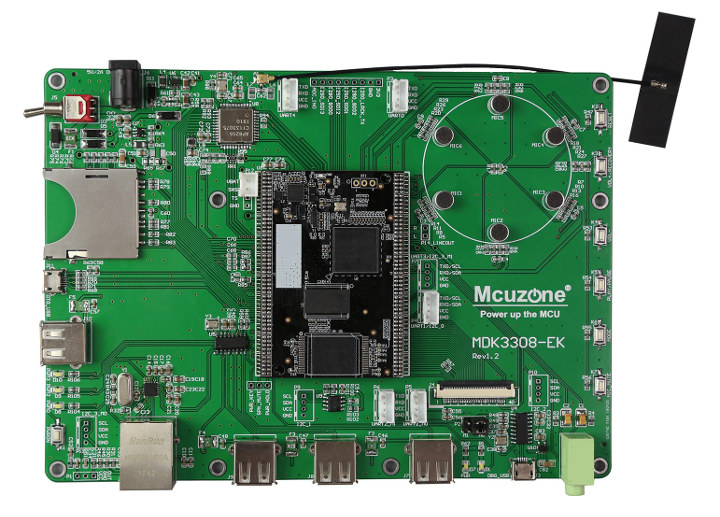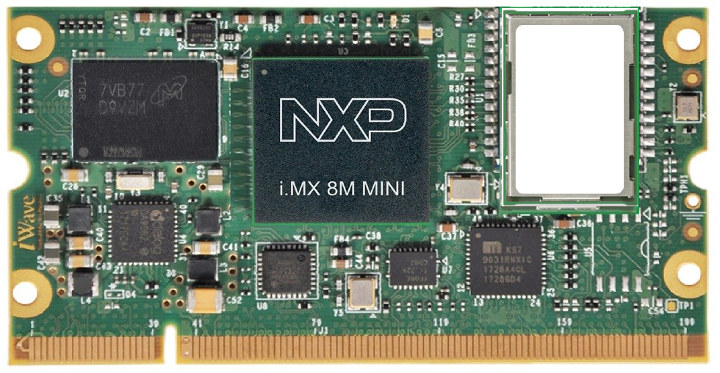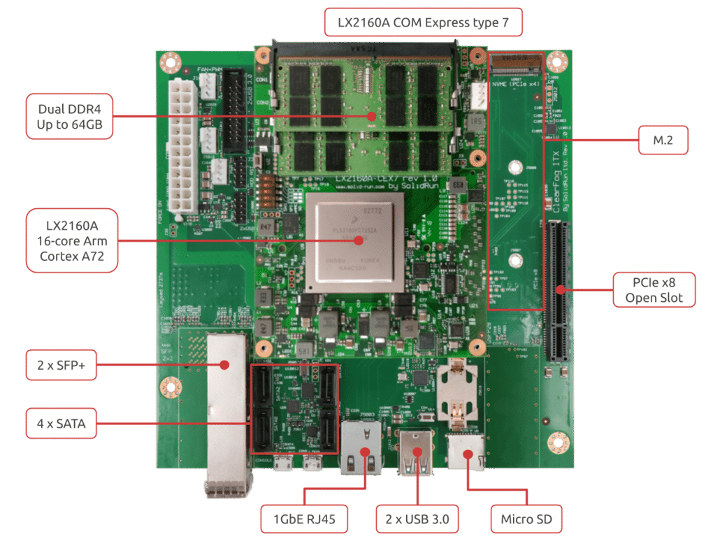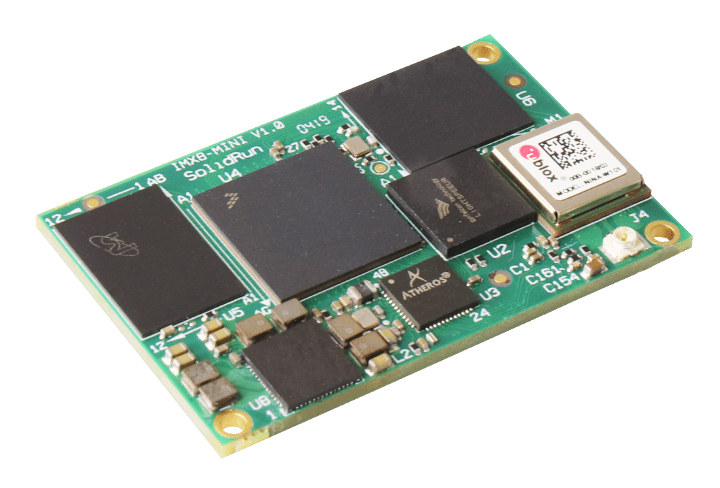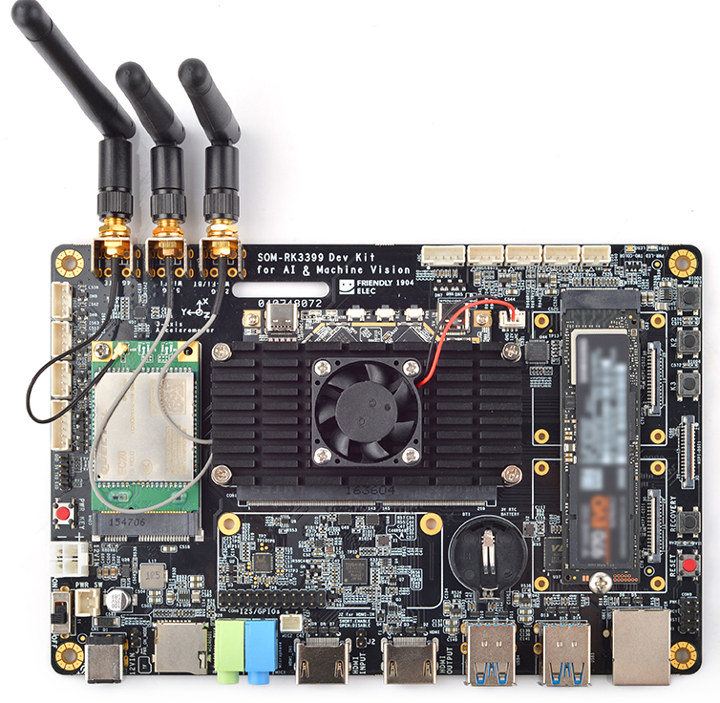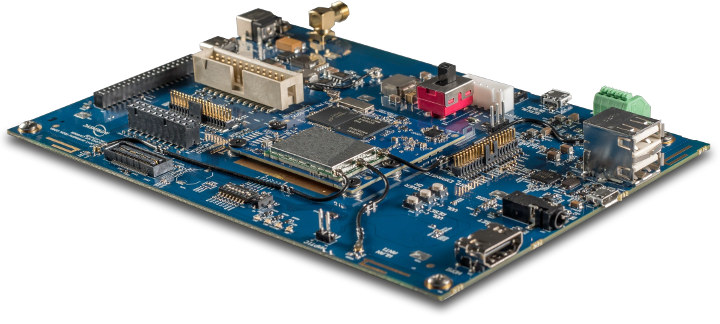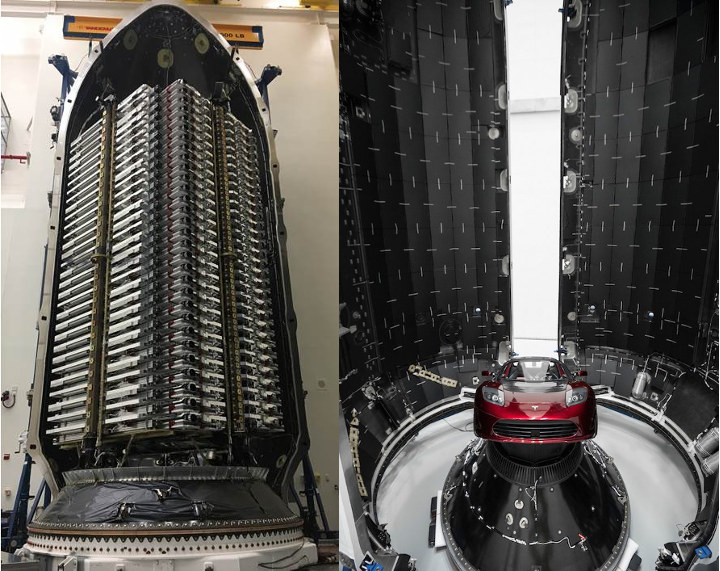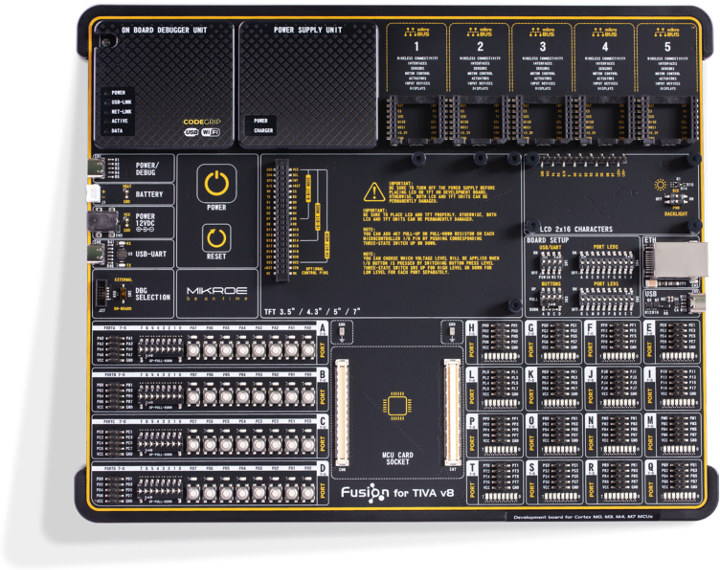Rockchip RK3308 is a quad-core Cortex-A35 processor that was announced in 2018 together with RK3326 specifically for Smart AI solutions. While the processor is equipped with an RGB LCD output interface, it does not come with a 2D or 3D graphics accelerator, so it’s better suited to smart speakers with an optional display using a basic user interface. I’ve not seen many hardware platforms or boards based on the processor, but today I noticed “Hangzhou Wild Chip Tech” had an RK3308 system-on-module, as well as development kits for sale on Aliexpress with the module price starting at $23. Mcuzone MDK3308 Coreboard Specifications: SoC – Rockchip RK3308 quad-core Cortex-A35 processor @ 1.3 GHz with NEON and VFPv4 FPU System memory / storage configurations: 256MB DDR3/3L + 256MB NAND flash 512MB DDR3/3L + 8GB eMMC flash 2x 100-pin dual row headers (1.27mm pitch) exposing: Display – LCD interface up to 1024×600 (RGB), […]
iWave Systems Unveils iW-RainboW-G34M-SM i.MX 8M Mini/Nano System-on-Module
NXP nomenclature for their i.MX 8M processors can be a little confusing. First discovered in 2016, the original i.MX 8M processor family comes with one to four Arm Cortex-A53 cores, a real-time Cortex M4 core, targets multimedia application with FullHD or 4K decoding/encoding support and is manufactured using a 28nm process. NXP then announced i.MX 8M Mini processor family in February 2018 with a 14-nm FinFET processor allowing a higher maximum CPU frequency of 2.0 GHz, less video output interfaces (no HDMI, nor DisplayPort), and optional Full HD video encoder and decoder, .e.g no 4K. Finally, earlier this year, the company unveiled NXP i.MX 8M Nano further power-optimized with the same 14nm manufacturing process, but a lower frequency of 1.5 GHz, and a Cortex-M7 core replacing the Cortex-M4 core found in previous i.MX 8M processors. This allows i.MX 8M Nano SoC to have a 2W TDP, and achieve sub-watt power […]
Pre-production HoneyComb LX2K 16-Core Mini ITX Arm Workstation is up for pre-order for $550
A few months ago, we wrote that SolidRun was working on ClearFog ITX workstation with an NXP LX2160A 16-core Arm Cortex-A72 processor, support for up to 64GB RAM, and a motherboard following the mini-ITX form factor that would make it an ideal platform as an Arm developer platform. Since then the company split the project into two parts: the ClearFog CX LX2K mini-ITX board will focus on networking application, while HoneyComb LX2K has had some of the networking stripped to keep the cost in check for developers planning to use the mini-ITX board as an Arm workstation. Both boards use the exact same LX2160A COM Express module. HoneyComb LX2K specifications: COM Module – CEx7 LX2160A COM Express module with NXP LX2160A 16-core Arm Cortex A72 processor @ 2.2 GHz (2.0 GHz for pre-production developer board) System Memory – Up to 64GB DDR4 dual-channel memory up to 3200 Mpts via SO-DIMM […]
SolidRun i.MX 8M Mini SoM Includes Gyrfalcon Lightspeeur 2803S AI Accelerator
There are already plenty of NXP i.MX 8M Mini boards and system-on-modules, but so far none of those included a neural network accelerator. But that’s now an option as SolidRun and Gyrfalcon teamed up to design SolidRun i.MX 8M Mini system-on-module that combines NXP i.MX 8M Mini processor with Gyrfalcon Lightspeeur 2803S NPU (Neural Processing Unit) in order to speed up AI workloads at the edge. SolidRun i.MX 8M Mini SoM Specifications: SoC (one or the other) NXP i.MX8M Mini S single core Arm Cortex-A53 processor up to 1.8 GHz, Arm Cortex-M4 core up to 400MHz, GC NanoUltra 3D GPU + GC320 2D GPU NXP i.MX8M Mini D dual-core Arm Cortex-A53 processor up to 1.8 GHz, Arm Cortex-M4 core up to 400MHz, GC NanoUltra 3D GPU + GC320 2D GPU NXP i.MX8M Mini Q quad-core Arm Cortex-A53 processor up to 1.8 GHz, Arm Cortex-M4 core up to 400MHz, GC NanoUltra […]
FriendlyELEC SOM-RK3399 Development Kit Targets AI & Machine Vision Applications
FriendlyELEC is better known for their low-cost tiny single board computers, but the company has also introduced systems-on-module in the past such as Smart6818 module powered by Samsung S5P6818 octa-core processor. The company has now launched another system-on-module with SOM-RK3399, which as its name implied features Rockchip RK3399 processor, as well as a corresponding carrier board mostly designed for artificial intelligence and computer vision applications. SOM-RK3399 System-on-Module Specifications: SoC – Rockchip RK3399 big.LITTLE hexa-core processor with 2x Cortex-A72 cores up to 2.0GHz, 4x Cortex-A53 cores up to 1.5GHz, Mali-T864 GPU with support for OpenGL ES1.1/2.0/3.0/3.1, OpenVG1.1, OpenCL, DX11, and AFBC, and VPU capable of handling 4K VP9 and 4K 10bits H265/H264 60fps decoding, Dual VOP, etc System Memory – Dual-Channel 2GB DDR3 Storage – 16GB eMMC 5.1 flash Networking 802.11a/b/g/n/ac, Bluetooth 4.1, Wi-Fi and Bluetooth combo module (AP6356S), dual antenna interface Realtek RTL8211E Gigabit Ethernet transceiver USB – 2x USB-C […]
Intrinsyc Launches Open-Q 212A SoM & Qualcomm Home Hub 300 Development Kit
Intrinsyc has just announced the availability of the Open-Q 212A system-on-module and Home Hub Development Kit based on Qualcomm Home Hub 300 Platform powered by the Qualcomm APQ8009 SoC better known as Snapdragon 212. The module supports multi-mic beamforming, audio canceling, HiFi audio, as well as WiFi 5 and Bluetooth connectivity, which makes it suitable for integration into cost-sensitive home hub, home automation, and smart audio devices featuring voice control, AI, and wireless connectivity. Open-Q 212A system-on- module Open-Q 212A SoM, which should not be confused with the company’s Open-Q 212 SBC released two years ago, features for the following specifications: SoC – Qualcomm Snapdragon 212 processor (APQ8009) quad-core Arm Cortex-A7 @ 1.267GHz with Adreno 304 GPU, Qualcomm QDSP6 DSP System Memory – 1GB LPDDR3 RAM Storage – 4GB eMMC Flash storage Video – 720p@30fps playback; up to 720p playback with H.264 (AVC) and H.265 (HEVC); up to 720p H.264 […]
Xilinx Arm FPGA, Snapdragon SoM’s, and Wandboard SBC Field Trip to Space
Most embedded systems are used here on planet earth, but some do take off heading for space, and this week I come accross two separate projects leveraging Arm processors and FPGAs, as well as Ubuntu/ROS and Android operating systems: SpaceX Starlink communication satellites and Astrobee robots roaming in the international space station (ISS) SpaceX Starlink Satellites with Xilinx Ultrascale+ Arm + FPGA SoC SpaceX is about to launch a cloud of 60 Starlink communication satellites that aims to provide internet communication anywhere in the world. That’s just a start as eventually the plan is to get up to 12,000 of those satellites. Usually, we would not know many technical details about the satellites, but as one reader pointed out (Thanks Lawrence!), a Reddit thread about the launch, also pointed to a NASA document revealing the satellites are powered by Xilinx Ultrascale+ quad core Cortex-A53 processor with FPGA fabric. Milestone 2 […]
Fusion for TIVA v8 Development Board Enables Debugging & Programming over WiFi
Texas Instruments TIVA Arm Cortex-M4 MCU family was first introduced in 2013, I tested a TIVA Launchpad the following years, and since microcontrollers have usually a long life span they are still in use today, and should still be available for many years. I’m writing about this TI MCU family today because MikroElektronika has just announced Fusion for TIVA V8 development board for TI TIVA, Stellaris and MSP432 microcontrollers with plenty of I/Os including some MikroBus expansion slots, as well as support for debugging and programming over WiFi in addition to the usual USB-UART interface. Fusion for TIVA v8 board specifications: MCU – Socket for MikroElektronika MCU CARD Display Interfaces 2x 20-pin TFT display connector 1x 16-pin LCD connector for 2×16 characters LCD displays in 4-bit mode, optional PWM backlight driving feature Programming – On-board CODEGRIP programmer/debugger, JTAG connector for connecting an external programmer/debugger Connectivity – Ethernet port, WiFI in […]


